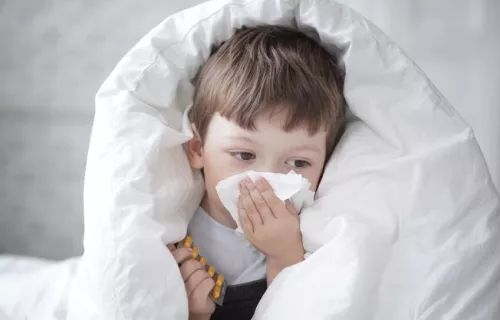
Wind-Cold (Feng Han) and Wind-Heat (Feng Re) are terms used in Traditional Chinese Medicine (TCM). The former is commonly referred to as “catching a chill,” often caused by fatigue, sudden exposure to cold wind, or inadequate rest. However, it can also be triggered by other factors such as allergic rhinitis.
Wind-Heat colds are more common in the spring and summer, typically due to temperature differences, such as when the outdoor temperature is around 37-38 degrees Celsius while the air-conditioned room is only a few degrees. Additionally, those who frequently consume warming foods like lamb are also prone to Wind-Heat colds.
Based on this judgment criterion, you might conclude that colds occurring in autumn and winter are all Wind-Cold, while those in summer are Wind-Heat! While this distinction holds true in a general sense, the reality is that Wind-Heat colds can also occur in winter!
Each season has its characteristics, but not all regions have clear boundaries. Spring often experiences a “late spring chill,” which can be as cold as mid-winter, while autumn can bring about the “autumn tiger,” leading to excessive sweating and scorching sun. These two periods are indeed peak times for colds, but whether they are Wind-Heat or Wind-Cold is not always clear.
Distinguishing Wind-Heat from Wind-Cold Colds
To differentiate between Wind-Heat and Wind-Cold, one must identify their respective symptoms. Remember these nine symptoms to distinguish between Wind-Heat and Wind-Cold colds!

1. Color of Nasal Discharge
Especially in children, a cold usually results in a runny nose. Clear nasal discharge indicates a Wind-Cold cold; thick, yellow nasal discharge indicates a Wind-Heat cold.
If the color of the nasal discharge changes from clear to yellow, it may be related to other conditions such as rhinitis, which should be considered during treatment.
2. Color of Phlegm
Parents often teach children not to spit phlegm everywhere, but it is important to do so, as the color and texture of phlegm can help determine the type of cold.
If the phlegm is thin and white, it indicates a Wind-Cold cold; if it is thick and yellow, it indicates a Wind-Heat cold.
3. Sore Throat
Generally, in Wind-Cold colds, the throat does not appear red or swollen and is not painful; if the throat is red, swollen, and painful, with enlarged tonsils, it indicates a Wind-Heat cold. Children may refuse to eat or drink in this case.

4. Severity of Cough
In Wind-Cold colds, coughing is generally mild, often just a dry cough with a scratchy throat.
In contrast, Wind-Heat colds cause a deeper cough due to the direct attack of Wind-Heat on the lungs, resulting in a loud cough originating from the chest. If phlegm is present, the cough may sound somewhat muffled.
5. Color of Tongue Coating
Patients with Wind-Cold colds typically have a thin white tongue coating, while those with Wind-Heat colds have a red tongue with a thin yellow coating.
6. Sweating
Individuals with Wind-Cold colds do not sweat easily due to the cold pathogen blocking the skin’s pores.
Conversely, Wind-Heat colds often lead to sweating as the Wind-Heat pathogen forces body fluids to evaporate and leak out, resulting in frequent sweating.

7. Thirst
When people catch a cold, they often receive advice to drink more hot water.
However, individuals with Wind-Cold colds usually do not feel thirsty due to sufficient body fluids. If a patient feels dry mouth and is constantly thirsty, it indicates a Wind-Heat cold.
Regardless of the type of cold, staying hydrated is important, but moderation is key.
8. Gastrointestinal Discomfort
Regardless of the type of cold, the body is in a state of discomfort, which can lead to gastrointestinal issues.
Wind-Cold colds are more likely to cause abdominal pain, frequent urination with clear, odorless urine, while Wind-Heat colds often result in constipation, diarrhea, and foul-smelling breath, with yellow urine.
9. Fever
Both types of colds can cause fever, but Wind-Cold colds typically have a mild fever, with patients feeling colder and experiencing stiffness and pain in the head, neck, and back. In contrast, Wind-Heat colds present with a higher fever, with patients feeling hot and even intolerant to heat.
Wind-Cold and Wind-Heat colds are merely a classification method; there are also classifications such as viral colds, bacterial colds, common colds, and influenza, each with different treatment principles. Although colds are considered minor illnesses, children have lower immunity and can easily worsen if not monitored. Therefore, parents should observe their children’s symptoms closely and seek medical attention promptly if there are signs of worsening.
Scan the QR code

Follow us

